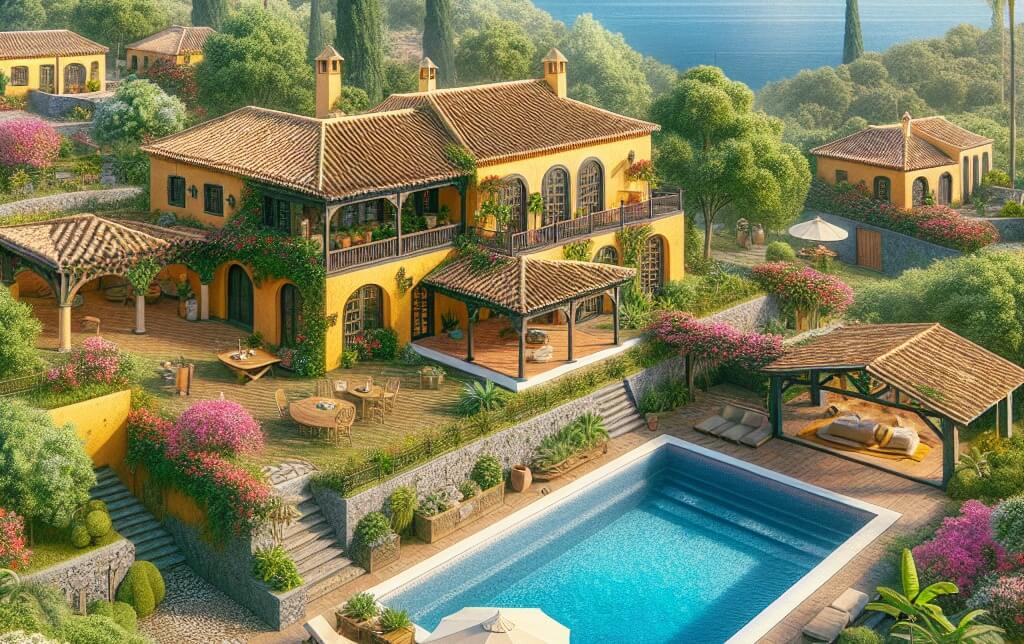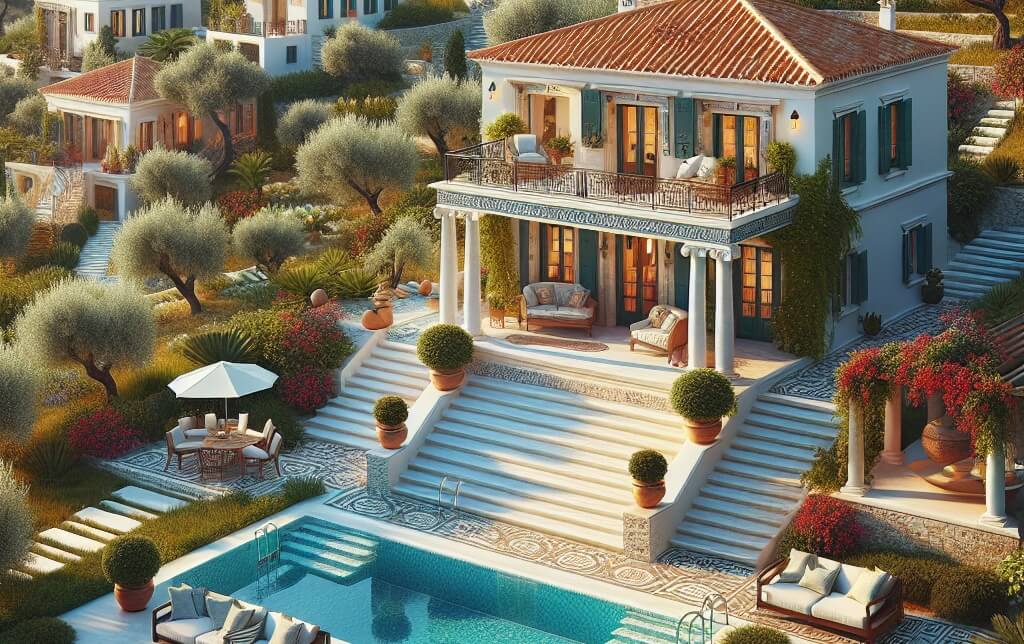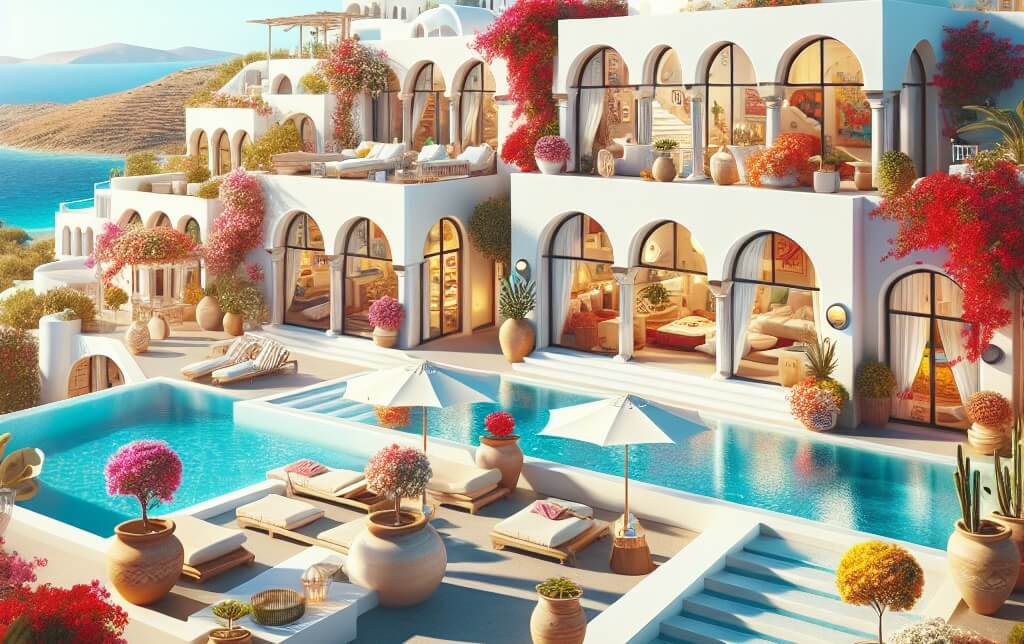
Beautiful Greek Houses for Sale
If you are in search of exquisite properties in Greece, the prospect of acquiring a beautiful Greek house for sale may be of great interest to you. The allure of Greek architecture, with its whitewashed walls, blue accents, and charming courtyards, is renowned worldwide. These houses often blend traditional aesthetics with modern amenities, offering a unique living experience in a picturesque setting. Whether you seek a seaside villa overlooking the Aegean Sea or a historic townhouse in the heart of Athens, the Greek real estate market presents a diverse array of options to suit your preferences. With careful consideration and guidance from experienced real estate professionals, you can explore the possibilities of owning a stunning Greek property that combines timeless elegance with contemporary comfort.
I. Introduction
In exploring the topic of Greek houses, it is essential to delve into the rich architectural and cultural heritage of ancient Greece. Greek houses were not merely structures for shelter, but also served as reflections of the values, beliefs, and social structures of the society. The design and layout of Greek houses were influenced by factors such as climate, geography, and religious beliefs, resulting in a unique and distinctive architectural style. By examining the layout, materials used, and symbolic significance of Greek houses, we can gain valuable insights into the daily lives and societal norms of ancient Greek civilization.
II. Greek House Architecture
Greek house architecture, also known as domestic architecture in ancient Greece, was characterized by its simplicity and functionality. The design of Greek houses was influenced by the climate and lifestyle of the inhabitants, with a focus on maximizing natural light and ventilation. Typically, Greek houses were built around a central courtyard, known as the peristyle, which served as a gathering place for family activities. The layout of the houses was symmetrical, with rooms arranged around the courtyard in a harmonious manner. The use of columns and colonnades was also common in Greek house architecture, adding a sense of grandeur and elegance to the overall design. Overall, Greek house architecture reflected the values of balance, proportion, and beauty that were central to Greek culture and society.
III. Construction Materials
In the construction of Greek houses, the choice of materials plays a crucial role in ensuring structural integrity and aesthetic appeal. Traditional Greek houses are typically built using locally sourced materials such as stone, clay, and timber. Stone, in particular, is commonly used for the foundations and walls of these houses due to its durability and ability to withstand the elements. Clay is often utilized for roofing tiles, providing excellent insulation and protection from the Mediterranean climate. Timber is also incorporated in the construction of Greek houses, mainly for framing and interior finishes. These materials not only reflect the historical and cultural heritage of Greece but also contribute to the sustainability and longevity of the structures.
IV. Greek Island Houses
Greek Island Houses are known for their distinctive architectural style that reflects the history and culture of the region. These houses typically feature whitewashed walls, blue accents, and traditional elements such as arched doorways and flat roofs. The design of Greek Island Houses is influenced by the climate, with open layouts and large windows to maximize natural light and ventilation. Additionally, the use of local materials such as stone and wood adds to the charm and authenticity of these homes. Overall, Greek Island Houses embody a sense of simplicity, elegance, and connection to the surrounding landscape, making them a unique and picturesque representation of Greek architecture.
V. Houses in Different Regions of Greece
V. Houses in Different Regions of Greece exhibit a diverse array of architectural styles and characteristics reflective of the unique cultural and environmental influences prevalent in each region. The traditional houses in the Cyclades, for example, are renowned for their cubic shapes, whitewashed walls, and blue accents, mirroring the island's proximity to the sea. In contrast, the stone-built houses of the Peloponnese region embody a more rustic and rugged aesthetic, harmonizing with the mountainous terrain. Furthermore, the wooden houses of northern Greece showcase intricate carvings and colorful embellishments, reflecting the region's historical ties to Byzantine and Ottoman architectural influences. Overall, the variation in housing styles across Greece not only highlights the country's rich cultural heritage but also underscores the importance of regional identity in shaping architectural design.
VI. Greek Houses and Society
Greek houses played a significant role in shaping the social structure of ancient Greek society. The architecture and layout of these houses were designed to reflect the values and hierarchy of the community. The structure of Greek houses often consisted of multiple rooms, with separate areas designated for men and women. This segregation of spaces reflected the strict gender roles and divisions within Greek society. Additionally, the size and grandeur of a Greek house were often seen as a symbol of wealth and status, with larger houses belonging to the upper class or aristocracy. Overall, Greek houses were not just places of residence, but also served as a reflection of the social order and values of ancient Greek society.
VII. Property in Greece Today
In contemporary Greece, the concept of property ownership is a significant aspect of the housing market. With a diverse range of residential properties available, including apartments, villas, and traditional houses, the real estate sector in Greece continues to attract both domestic and international buyers. Property ownership in Greece is governed by a legal framework that outlines the rights and responsibilities of homeowners. Additionally, factors such as location, size, and condition of the property influence its market value. Overall, the property market in Greece today offers a variety of housing options for individuals seeking to invest in or purchase a home in this Mediterranean country.
VIII. Conclusion
In conclusion, the influence of Greek architecture on houses is undeniable, as evidenced by the enduring popularity of Greek-inspired design elements in residential structures around the world. From the iconic columns and pediments to the use of symmetry and proportion, the aesthetic principles of Greek architecture continue to inspire and inform modern housing design. By incorporating these timeless elements into contemporary homes, architects and homeowners alike pay homage to the rich architectural heritage of ancient Greece while creating spaces that are both functional and visually striking. The legacy of Greek architecture in residential design serves as a testament to the enduring appeal and enduring relevance of this ancient architectural tradition.
IX. Integration of Pertinent Points
In the integration of pertinent points regarding Greek houses, it is essential to consider the historical and cultural significance of these architectural structures. Greek houses, characterized by their distinctive columns, pediments, and symmetrical designs, serve as exemplars of classical architecture and have influenced architectural styles globally. Furthermore, the layout and functionality of Greek houses, with separate living quarters for men and women, reflect the societal norms and values of ancient Greece. By examining the design elements, cultural context, and social implications of Greek houses, a comprehensive understanding of their significance can be achieved.









